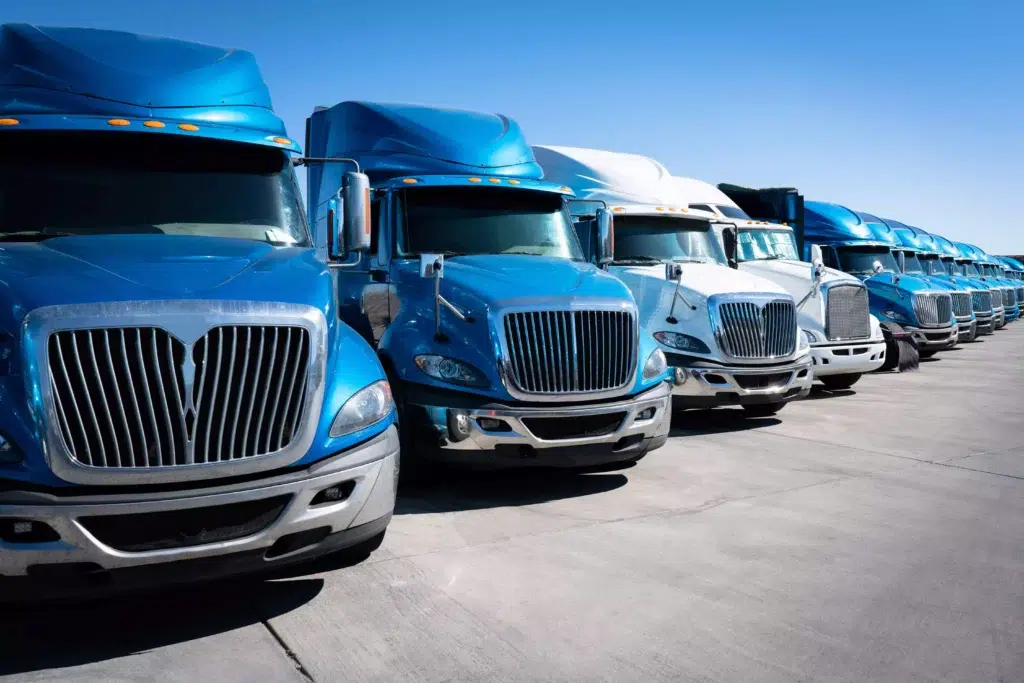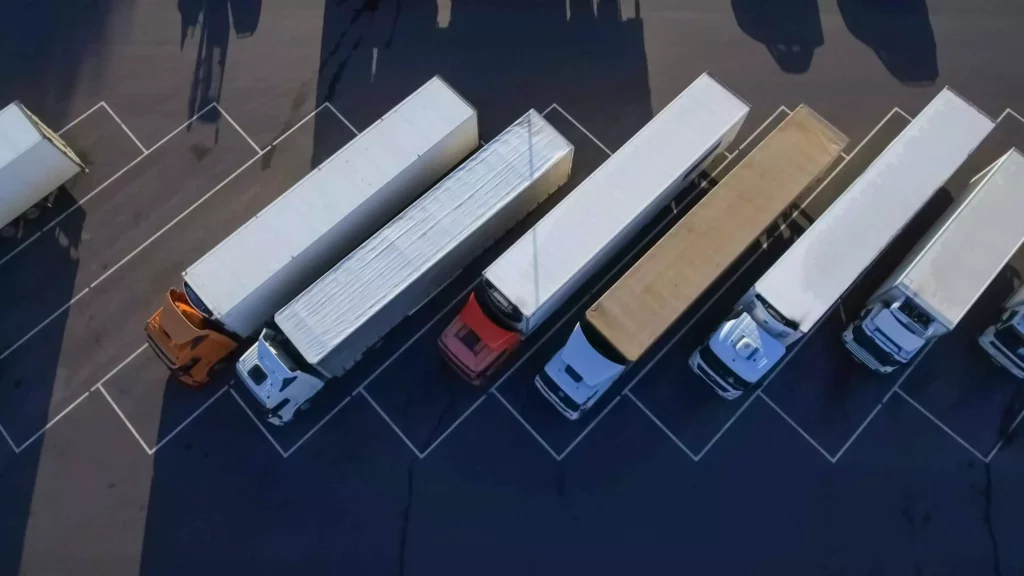Every time a delivery van circles a block or hits unexpected traffic, another bit of profit burns away. For logistics leaders, the challenge goes beyond mapping the fastest path; it’s about squeezing every ounce of value from each drop of fuel.
That’s where route optimization software makes the difference. With intelligent delivery route planning and integrated fleet management software, companies see real fuel cost reduction. Smart logistics optimization transforms not just routes, but the way your business wins against rising expenses.
Key Takeaways
- Route optimization software typically reduces fuel consumption by 15-25% through algorithmic efficiency improvements.
- Real-time traffic integration and dynamic re-routing prevent fuel waste from congestion and delays.
- Combining deliveries with pickups eliminates empty backhaul miles that burn fuel without revenue.
- Driver behavior monitoring improves fuel efficiency by 15-20% through aggressive driving reduction.
- Beyond fuel savings, optimization improves customer satisfaction, reduces maintenance costs, and increases driver satisfaction.
Why Fuel Efficiency Is a Top Priority in Logistics
Fuel Costs Are One of the Largest Operational Expenses
Fuel keeps every delivery moving, but it can drain a budget fast. For most logistics operations, it ranks near the top of operational costs, often accounting for 20 to 30% of total expenses.
Take a mid-sized fleet. With 50 vehicles on the road, even a small fuel price jump, just fifty cents a gallon, can balloon monthly costs by thousands. That kind of pressure turns every extra mile into a problem worth solving.
Now picture a company managing 100 daily routes, each stretching about 120 miles.
At today’s fuel rates, the monthly bill for gas alone easily tops $15,000. The math is simple: the more you drive, the more you pay. But there is good news. Even a small 10 percent boost in route efficiency means saving $1,500 a month. Over a year, those small changes could return $18,000 to your bottom line.
Rising Fuel Prices and Sustainability Demands
The cost of fuel can skyrocket overnight, turning a planned budget into a scramble for savings. Fleet managers react fast, adjusting schedules and rethinking deliveries to soften the blow of every price hike.
But the pressure doesn’t end at the fuel pump. New regulations require logistics providers to track and report carbon emissions. Companies must prove their commitment to sustainability, not just talk about it. More customers demand greener practices and want evidence before choosing a partner.
Expectations have shifted. It is no longer enough to deliver on time. Now, every mile must support both efficiency and environmental responsibility.
With smarter route optimization software, businesses stay ahead of fuel volatility, meet sustainability demands, and build lasting trust with clients, all while protecting their bottom line.
How Route Optimization Software Reduces Fuel Usage
Modern route optimization software employs sophisticated algorithms to eliminate fuel waste across every aspect of fleet operations. Here are ten specific ways these platforms cut fuel costs:
1. Minimizing Total Miles Traveled
There was a time when drivers trusted their instincts and old maps to find the way. Now, route optimization software does the heavy lifting. It calculates the smartest route across every stop, considering distance, real-time traffic, and delivery priorities.
A route that once took 150 miles for 12 stops can often be trimmed down to 120 or 130 miles. With every unnecessary detour removed, each delivery becomes part of a seamless plan.
When your fleet completes hundreds of routes each month, these savings add up. Fewer miles traveled leads directly to fuel cost reduction. Smarter delivery route planning supported by fleet management software turns daily routines into real, measurable results. This is logistics optimization working at every level, every day.
2. Avoiding Traffic Congestion

Traffic steals time. It burns fuel. Idling in a jam, a truck’s efficiency drops by as much as 40 percent compared to cruising along the highway.
Modern fleet management software changes the game. It uses live data to watch for trouble. When congestion builds, drivers are redirected. A route that once meant two extra gallons wasted in traffic now stays clear, with alternate roads guiding the way.
Over time, the system learns. It remembers where slowdowns hide. The next rush hour, drivers glide past the usual gridlock. This is logistics optimization in action. Fuel costs fall, and every mile becomes a little less expensive.
3. Reducing Idle Time
Idle time is the quiet thief of fleet operations. It sneaks up in parking lots, at loading docks, and outside customer doors. Engines running, fuel burning, money lost with each passing minute.
But things change with smarter planning. Route optimization software coordinates schedules with customer availability. Drivers arrive right when they’re needed, not a moment too soon. Routes are sequenced to avoid unnecessary waiting.
Some advanced fleet management systems take it further. They link with customer calendars, updating delivery times as availability shifts. Less idle time means lower costs.
Efficiency grows. Small details, when managed well, create a powerful impact on fuel cost reduction and logistics optimization.
4. Intelligent Stop Sequencing
Manually planning routes can leave drivers zig-zagging across town, retracing their tracks and losing precious time. It’s easy to get focused on individual stops and overlook the bigger picture.
But when route optimization software takes the wheel, every stop is weighed together. Algorithms study the full route, balancing delivery priorities, time windows, and traffic patterns.
Stops are arranged in logical circles or neat grids, not random lines that double back. Drivers follow a route that flows, each stop building on the last. The wasted miles and extra fuel are gone.
A well-sequenced journey feels effortless. The day runs smoother. Deliveries reach customers faster. Fuel cost reduction starts to feel like a natural part of the process, not just an afterthought.
Visual suggestion: Animated map showing inefficient zig-zag routing vs. optimized circular routing pattern
5. Combining Deliveries and Pickups
Trucks roll out in the morning, loaded with deliveries. By afternoon, they often head back empty, burning fuel and adding miles that bring in nothing.
This is a routine many fleets accept, even though it leaves plenty of value on the table.
The smartest operations find ways to combine tasks. A driver drops off the last box, then swings by a nearby supplier to pick up fresh inventory or return shipments. Suddenly, the drive back is worth something. Vehicles haul cargo both ways, making every mile count.
Better planning turns empty time on the road into productive work. Fewer empty miles mean lower costs, higher efficiency, and a fleet that’s always moving something forward.
6. Optimizing Delivery Windows
Missed deliveries cause more than customer frustration. Every failed attempt means a wasted trip and more fuel burned. The cost adds up, especially when re-delivery takes 20 to 30% as much fuel as the original run.
Route optimization platforms solve this by syncing routes to customer schedules. Drivers show up when customers are available, not hours too early or late. Real-time communication tools let companies adjust delivery windows on the fly. Some platforms even analyze past delivery success to find the best times for each location.
With each successful delivery, efficiency climbs higher. Fewer wasted trips. Lower fuel bills. A logistics operation that feels smarter with every stop.
7. Dynamic Re-Routing During the Day
Plans change fast on the road. A delivery gets delayed. Weather shifts suddenly. Orders get canceled mid-route. Some drivers sit and wait. Others move with confidence because their directions always update.
The right technology adapts on the fly. One moment, a driver is set to make ten stops. Suddenly, two are canceled and another gets pushed back. The system reroutes in seconds. Every change is met with a smarter, safer plan.
This flexibility saves fuel, prevents headaches, and keeps your day moving smoothly, even when the unexpected tries to slow you down
8. Vehicle-Specific Optimization
No two vehicles in your fleet are exactly alike. A nimble van glides through tight city streets. A large box truck carries heavier loads, sticking to main roads and making fewer stops.
Planning tools consider what each vehicle does best. Smaller, more fuel-efficient vans tackle longer suburban routes. Big trucks take on dense urban deliveries where they can make the most of their cargo space.
Matching the right vehicle to the right job is a game changer. The result is less fuel wasted, happier drivers, and a fleet that feels perfectly in sync with the work ahead.
9. Reducing “Deadhead” Miles Between Routes
Empty trucks eat into profits. After a round of deliveries, a driver heads back across town with nothing in the back, just burning fuel for no good reason. Strategic planning changes that story. Stops are grouped together. Routes are clustered, with transitions kept short. Some days, vehicles share coverage to avoid overlap and needless travel.
The fewer deadhead miles you drive, the more you save. Each trip home is shorter. Each tank of fuel lasts longer. It is a quiet way to win back both time and money, one route at a time.
Real-World Fuel Savings from Route Optimization
Case Study: Measurable Results Across Industries
A regional food distribution company operating 75 delivery vehicles implemented comprehensive route optimization software and achieved remarkable results within 90 days:
- 18% reduction in total miles driven across all routes.
- $3,200 monthly fuel savings with fuel prices at $3.80 per gallon.
- 22% improvement in on-time delivery rates due to more realistic routing.
- Elimination of 95% of overtime hours through better route planning.
These results demonstrate that fuel savings often exceed initial projections when optimization software addresses multiple inefficiencies simultaneously.
Benchmark Savings Across Industries
Route optimization delivers different levels of fuel savings depending on operation type and current efficiency levels:
- Last-mile delivery services: 15-25% fuel reduction through stop sequence optimization and traffic avoidance.
- Food and beverage distribution: 12-20% savings via load consolidation and delivery window optimization.
- Furniture and appliance delivery: 20-30% reduction through appointment scheduling integration and route clustering.
- Third-party logistics (3PL): 10-18% improvement through multi-client route coordination and backhaul optimization.
Operations with less sophisticated existing routing typically see larger improvements, while already-optimized fleets still achieve meaningful 8-12% fuel savings through advanced algorithms and real-time adaptability.
Bonus Benefits Beyond Fuel
Fewer Maintenance Issues
Shorter, smoother routes cut down on vehicle wear and tear. Optimized routing eliminates up to 25 percent of harsh stop-and-go driving, which means less brake wear, lower transmission stress, and fewer engine issues.
Fleet managers often report maintenance costs dropping by as much as 30 percent along with their fuel savings.
Less aggressive routing also extends tire life and reduces oil change frequency. When paired with driver behavior monitoring, route optimization delivers long-term vehicle longevity and steady operational savings that continue to grow with every mile.
Happier Drivers

Logical, efficient routing makes a difference you can feel. Drivers experience less fatigue and frustration when their routes follow a natural path.
They arrive at predictable times without extra backtracking or confusing directions.
Modern platforms often provide driver-friendly features, including turn-by-turn navigation, automatic customer updates, and realistic time estimates. Each tool helps reduce stress behind the wheel.
As a result, job satisfaction rises and driver turnover drops. In a tight labor market, keeping experienced drivers happy becomes an important advantage for any fleet.
Higher Customer Satisfaction

On-time deliveries and accurate arrival windows build stronger customer relationships.
With better route planning, companies can make more precise delivery promises and keep customers informed every step of the way. Reliability leads to loyalty. Customers who receive dependable service are more likely to order again and recommend your business to others.
After adopting comprehensive route optimization, many companies see customer satisfaction scores rise by 15-25%. This boost supports steady revenue growth and improved client retention, making it a key benefit of any modern fleet operation.
How to Get Started with Route Optimization Software
What to Look for in a Platform
When evaluating logistics optimization solutions, prioritize platforms offering:
- Comprehensive fuel efficiency reporting with before/after comparisons and trend analysis.
- Dynamic route updates that adapt to real-time changes throughout the day.
- API integrations connecting with existing systems like customer management, inventory, and accounting platforms.
- Driver mobile apps providing turn-by-turn navigation and delivery confirmation tools.
- Scalable architecture that grows with fleet expansion and changing business needs.
Advanced platforms should also offer predictive analytics, machine learning optimization, and detailed performance dashboards that help track ROI and identify additional improvement opportunities.
How to Measure ROI
Track these key metrics to quantify fuel savings and overall optimization benefits:
- Miles per gallon improvements across individual vehicles and entire fleet.
- Total miles driven reduction on daily, weekly, and monthly timeframes.
- Fuel cost per delivery trends showing efficiency improvements over time.
- Route completion time reductions indicating overall operational efficiency.
- Customer delivery success rates demonstrating service quality improvements.
Establish baseline measurements before implementation and monitor consistently post-deployment. Most organizations see measurable improvements within 30-45 days, with full benefits realized within 90 days of system deployment.
Scaling as Your Fleet Grows
As your business expands, route optimization software must keep pace. The best platforms scale effortlessly, allowing you to add new vehicles and drivers without sacrificing performance or driving up costs.
Growth often means more depot locations and more routes to coordinate. A scalable solution manages these complexities, seamlessly connecting multi-location operations and handling seasonal demand spikes with ease.
Integration is key. As your systems evolve, the platform should link with new business tools and processes, keeping everything in sync.
A truly adaptable platform grows alongside your business, preserving efficiency gains even as operations become more complex. Expansion, new services, or shifting customer needs won’t slow you down.
Is Your Fleet Missing Out on Real Fuel Savings?

Cutting fuel costs goes far beyond trimming a few miles from your daily routes.
Real savings come from smarter, data-driven decisions at every step. The right route optimization platform equips your team with the tools to adapt on the fly, reduce emissions, and consistently deliver better service.
The most successful fleets combine powerful software with ongoing driver training, real-time monitoring, and a commitment to continuous improvement. As fuel prices fluctuate and sustainability becomes a business imperative, optimizing your delivery routes shifts from a nice-to-have to a true necessity.
Ready to discover how much your fleet could save? Schedule a demo with CIGO Tracker to see how our platform helps optimize routes, reduce fuel usage, and drive smarter decisions across your fleet.
Frequently Asked Questions
1. How exactly does route optimization software reduce fuel usage?
By calculating the most efficient paths based on real-time traffic, distance, and delivery windows, route optimization minimizes idle time, detours, and unnecessary mileage, all of which directly cut fuel consumption.
2. Is route optimization only beneficial for large fleets?
Not at all. Even small businesses with just a few vehicles can see significant savings in fuel and time by optimizing delivery or service routes more efficiently.
3. Does route optimization consider factors like traffic or road conditions?
Yes, modern route optimization tools integrate real-time traffic data, weather conditions, and road closures to dynamically adjust routes and reduce fuel-wasting delays.
4. Can route optimization help with vehicle maintenance and wear?
Absolutely. Less time on the road and fewer stop-starts mean reduced engine strain, tire wear, and maintenance needs, all of which save money beyond just fuel.
5. How quickly can businesses see fuel savings after implementing the software?
Many businesses begin noticing reduced fuel expenses within weeks of consistent use, especially when paired with driver training and telematics for accountability.
